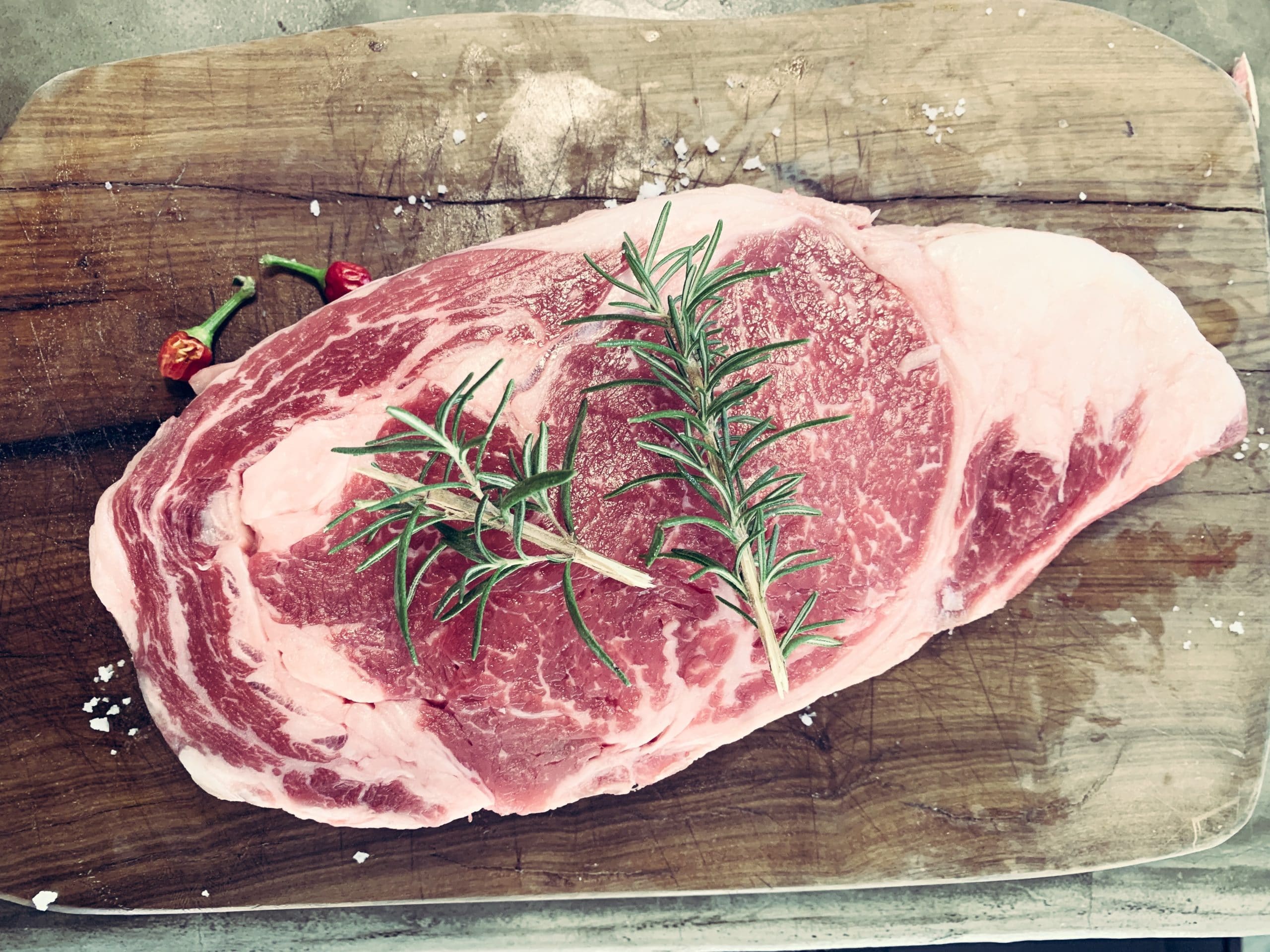Here at Snap Kitchen, we’re big fans of healthy fat. Like, scream it from the rooftops, tell all our friends and family, not a bad word to say kind of fans. We’ve waxed poetic about them on the blog a lot, listing reasons why they’re so good for us, and talking about sunflower oil and what the heck high oleic means. It should be no surprise, then, that we enthusiastically use a few main healthy fats in our own kitchen, including ghee and extra virgin olive oil.
But we’ve noticed a lot of questions about the different kinds of fat (Spoiler: there are four!). They’re not all created equal, after all. Should you be avoiding saturated fat? What about polyunsaturated fats? Today, we’re breaking down the different kinds of fat, so that you can make informed decisions about the ones that end up on your plate.
Monounsaturated fats
Monounsaturated fats are a type of unsaturated fat. They have a single double bond in their structure, and as a result, are generally liquid at room temperature. Since they only have one double bond, they’re more susceptible to oxidation or being damaged from exposure to light, heat, and oxygen.
Monounsaturated fats are found in a few different foods, including olives, avocados, certain meats, and some nuts (like macadamia nuts!). They’re the one type of fat that all parties, from the fat-fearing American Heart Association to keto-friendly organizations like Atkins, can agree are a great choice.
Lots of research has been done on monounsaturated fats and their impact on cardiovascular disease markers. Monounsaturated fats have been shown to lower LDL, increase HDL, and lower triglycerides. They also reduce inflammation, lower blood pressure, and may lower overall risk for heart disease.
Polyunsaturated fats
Unlike monounsaturated fats, polyunsaturated fats have multiple double bonds in their structure, meaning they’re always liquid at room temperature. It also means they’re the most prone to oxidation during high-heat cooking. We talk about this in more detail here.
Still, polyunsaturated fats are essential for our survival and play a role in forming cell membranes, regulating gene expression, and supporting overall cell function. Polyunsaturated fats fall into two subcategories: omega-3 fats and omega-6 fats. These two fats have different structures and very different functions in the body.
While omega-6 fats have gotten a bad reputation for being pro-inflammatory, the story isn’t that simple (it rarely is!). We need some omega-6 fats for survival, and they can be found in all sorts of natural foods, from fruits and vegetables to meat. But in the standard American diet, we eat way too many omega-6 fats, largely because we eat a whole lot of chicken (higher in omega-6 fats than other meats) and we also eat a lot of processed vegetable oils like soybean, cottonseed, corn, canola, and sunflower oil. In excess, omega-6 fats can cause inflammation, gut dysbiosis, and may contribute to autoimmune diseases, premature aging, cancer, and more.
Just like omega-6 fats, there are actually six different types of omega-3 fats. However, there are three main ones that tend to get the most attention—alpha-linoleic acid (ALA), eicosapentaenoic acid (EPA), and docosahexaenoic acid (DHA). ALA is found in some plant foods, like walnuts and flax, and can be converted to EPA and DHA in the body, but the process is not very efficient (it’s on the level of .5-5%). EPA and DHA are found naturally in fatty cold-water fish like salmon, mackerel, sardines, anchovies, and certain shellfish.
The main benefit of omega-3s comes from EPA and DHA. In fact, not getting enough of these two omega-3 fats is associated with higher levels of inflammation and associated chronic diseases.
Saturated fats
While saturated fats have gotten a bad reputation for a long time, it’s largely undeserved. Saturated fats don’t have any double bonds between carbon atoms, which results in a very straight structure, meaning most saturated fats are solid at room temperature. This structure also means that many saturated fats are awesome for cooking since they are more stable at higher heat and not prone to the oxidative damage that occurs with many unsaturated fats.
There is more than one type of saturated fat, and they’re classified based on the length of their fatty acid chain, from long to medium, to short. Long-chain saturated fats are mostly found in the milk and meat of animals like cows and sheep. Medium-chain saturated fats are found in coconut milk and breast milk. They’re a great source of easily digestible energy since they don’t need bile acids for digestion. Short-chain saturated fats aren’t typically found in our diets, though you’ll find small amounts in butter and ghee. Normally, short-chain saturated fats (or short-chain fatty acids – SCFAs) are formed via fiber fermentation in the large intestine.
Trans fats
If you follow nutrition at all, you probably know that trans fats have been banished from most products, relegated to the trash bin. But did you know that there are two types of trans fats? Naturally-occurring trans fats and artificial trans fats.
And turns out that naturally-occurring trans fats can actually be good for you! These are formed by bacterial fermentation in the stomachs of grazing animals, like cows or sheep. Conjugated linoleic acid, aka CLA, is one of these naturally-occurring trans fats, and it’s found in grass-fed animal meat and dairy products. It’s associated with a host of benefits, from lowering heart disease risk to improving blood sugar regulation and insulin sensitivity (a good thing!). There is also emerging research on CLA as it relates to reduced body fat, weight loss, and reduced cancer risk. Cool stuff!
Artificial trans fats, on the other hand, deserve the bad reputation they’ve been given. While their chemical structure doesn’t differ much from natural trans fats, the small differences cause artificial trans fats to impact the body very differently. Research on trans fats is extensive, and it shows they may cause everything from increased risk of cancer, increased risk of heart disease, obesity, and a host of other inflammatory conditions. The good news? If you’re staying away from highly processed foods, you’re naturally avoiding these artificial trans fats.
In the end, it’s important to eat a variety of real, whole foods. Nature really doesn’t make mistakes! By eating lots of veggies and some fruit, high-quality proteins, and nourishing saturated and unsaturated fats, you’ll give your body the balance it needs to thrive. Avoid highly processed foods whenever possible, and swap your processed vegetable oils (we’re looking at you canola, corn, soybean, and sunflower oil!) for more stable fats like avocado oil, extra virgin olive oil, grass-fed butter or ghee, or coconut oil, especially when cooking.





Leave a Reply
No Comments